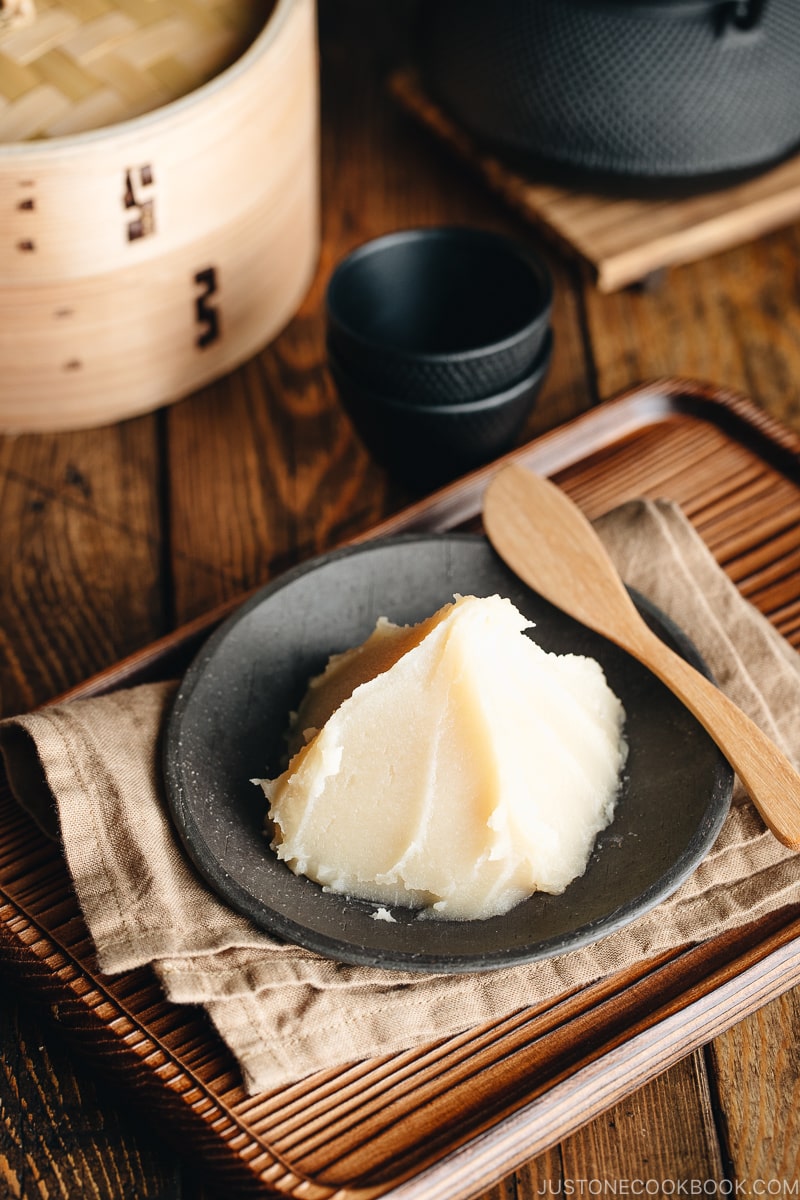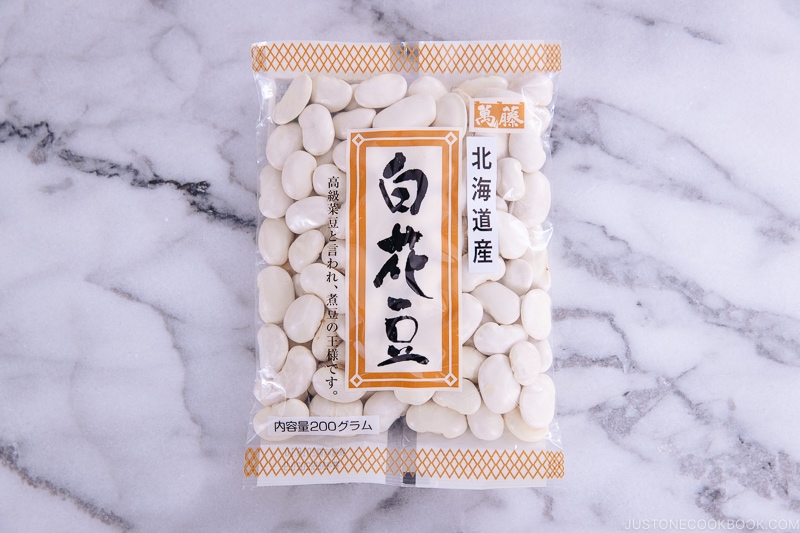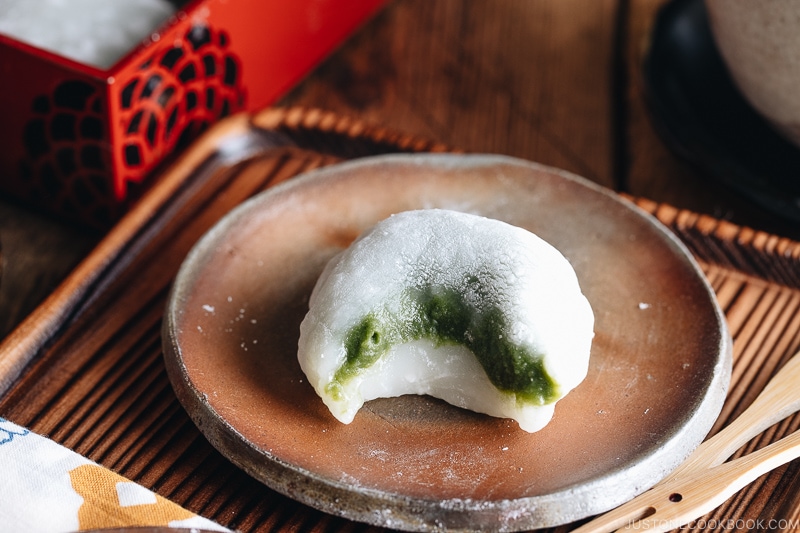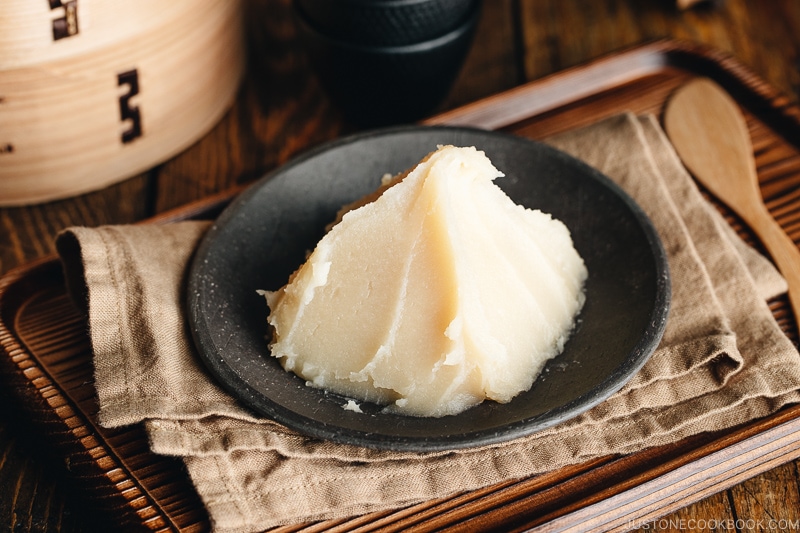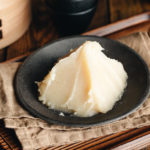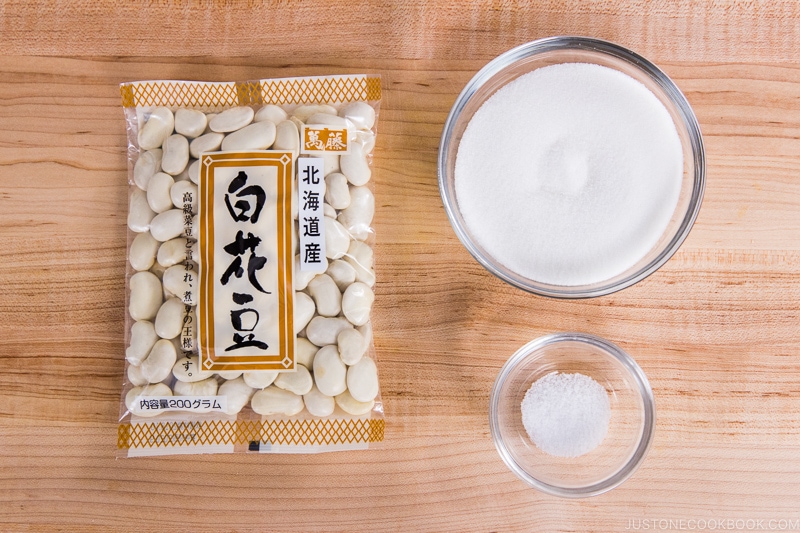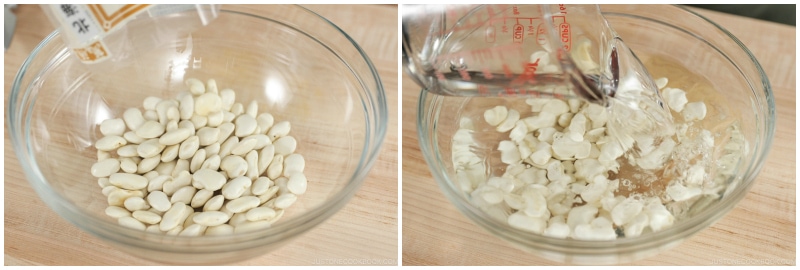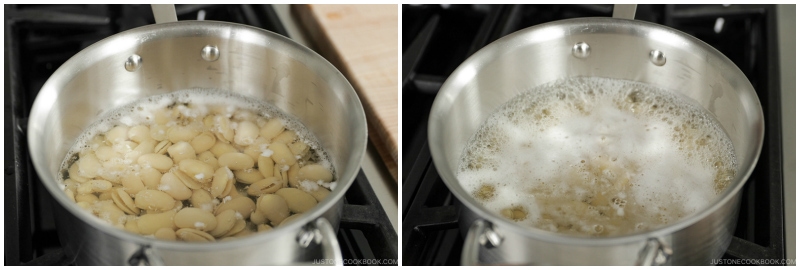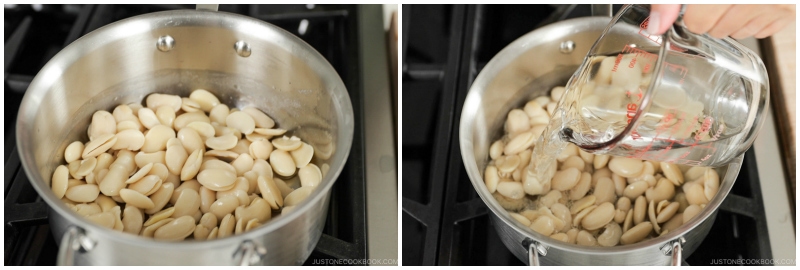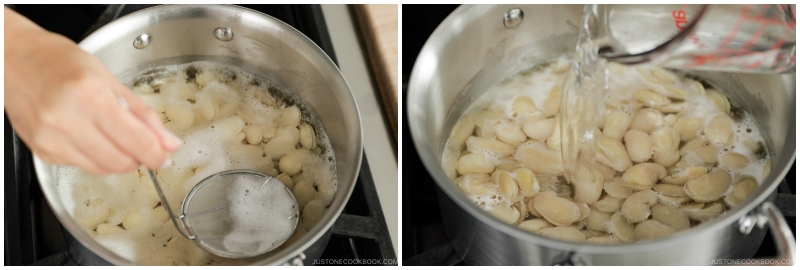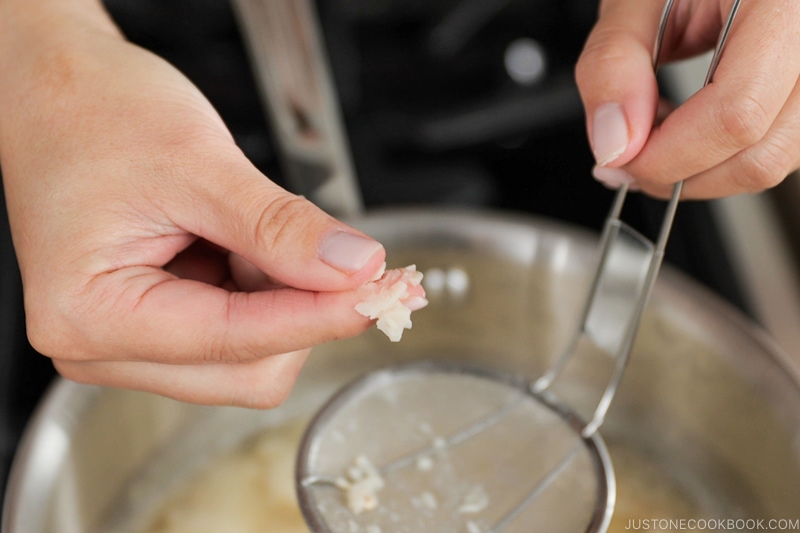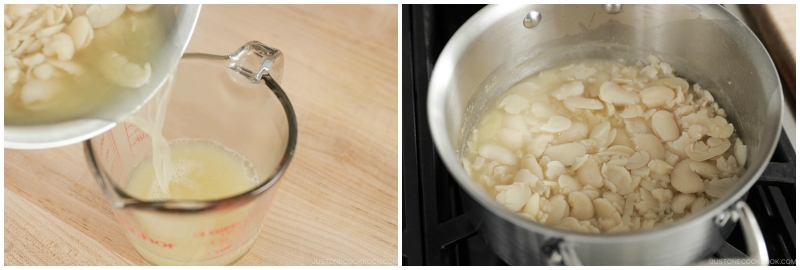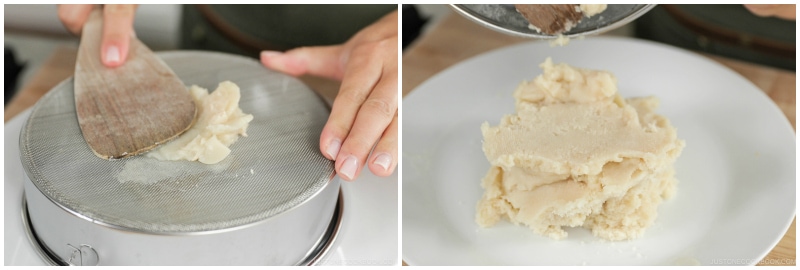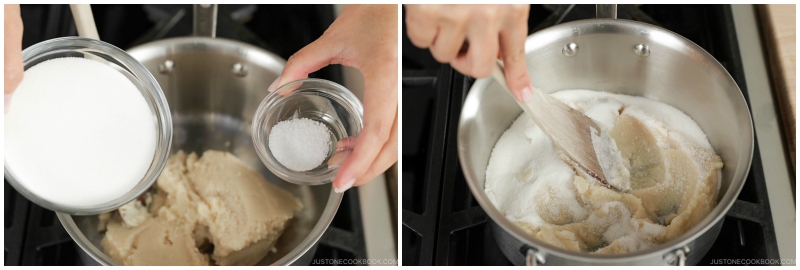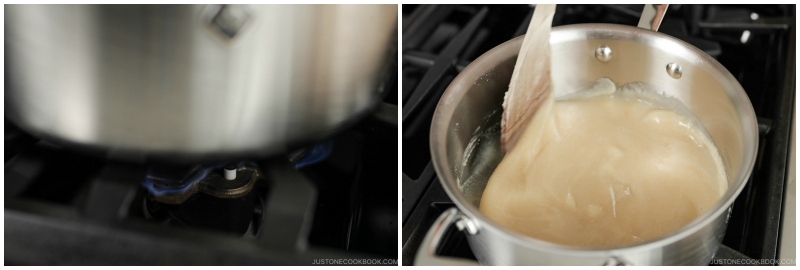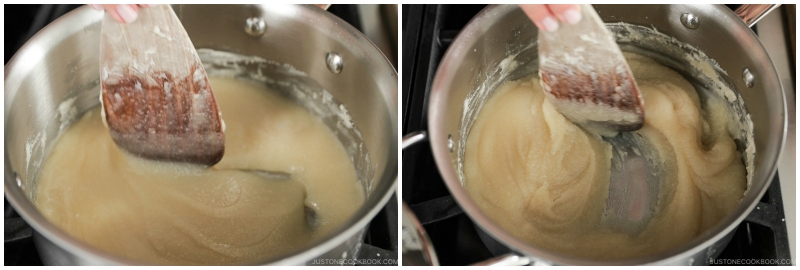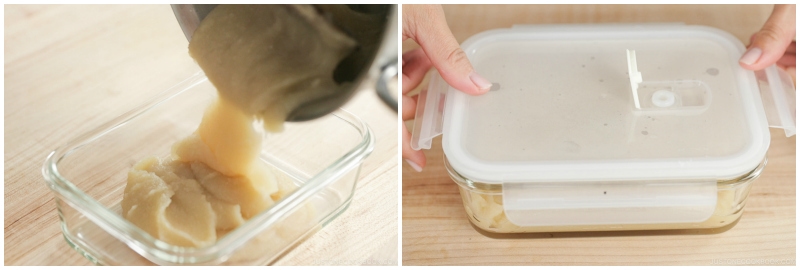White bean paste or shiroan (白餡, 白あん) is primarily used as a filling for sweet desserts and pastries in Japanese and East Asian cuisines. It has a milder bean taste than red bean paste, so you may enjoy this alternative filling in your wagashi (Japanese confectionery). Premade white bean paste is difficult to find outside of Japan. In this Shiroan recipe, I’ll show you how simple it is to make at home, although the process does take some time. Nonetheless, you can make white bean paste ahead of time so it’s ready for use when you make Japanese sweets.
What is White Bean Paste (Shiroan)?
Shiroan (白餡 or 白あん) is the smooth and sweet white paste called an (餡) or anko (餡子). It’s made from lima beans or butter beans, or shiro ingen mame (白いんげん豆) in Japanese. The beans are hulled, simmered till tender, drained, and pureed before sugar is added to sweeten the paste. You may be familiar with red bean paste made from azuki beans. There are two types of red bean paste: non-hulled and coarse tsubuan (粒餡) and hulled and smooth koshian (漉し餡). However, white bean paste is always hulled and smooth koshian.
Ingredients for Shiroan
dried lima beans (see the next section for what kind to use) sugar Diamond Crystal kosher salt
Types of White Beans To Use for Shiroan
Outside of Japan
lima beans (also called butter beans) navy beans cannellini beans (as a last option, only if you cannot find lima or navy beans)
I do not recommend substituting with other beans because the taste and texture will be completely off.
In Japan
shiro ingen mame (白いんげん豆) shirohana mame (白花豆) oofuku mame (大福豆) tebo mame (手亡豆) kintoki mame (金時豆) shiro azuki (白小豆)
How To Make Shiroan
Transfer to a clean container with a lid. Refrigerate and use within a few days or divide the paste into small portions and freeze for up to 2–3 months.
1. What types of white beans should I use?
Use lima beans (butter beans) or navy beans. I used shirohana mame (白花豆) from Hokkaido in this recipe (bought in Japan).
2. What type of sugar should I use?
Use granulated white sugar to keep the paste white in color. Do not use sugar that has any color, such as brown sugar.
3. Can I reduce the amount of sugar?
You can, but if you reduce the amount of sugar significantly, the paste will not have enough moisture and the texture will change. Sugar is necessary for the preservation of the bean paste, but if you are going to consume it soon, you can reduce the amount slightly. Also, wagashi is meant to be on the sweet side to complement the bitter taste of matcha (green tea beverage). Typical traditional recipes require ⅔ to 1 part of sugar for 1 part of dried beans (in some cases, more than 1 part). You can replace sugar with a healthier alternative, such as maple syrup or honey but the paste will be more liquidy and the flavor can be overpowering.
4. Is salt necessary?
You may wonder why salt (or salty taste) is required in the mixture when you are trying to sweeten. Adding some salt contrarily makes it taste a lot sweeter and brings out more flavors.
5. Can I use a pressure cooker instead of simmering on the stove?
Yes, you can cut down on the cooking time by using a pressure cooker (Instant Pot). According to the Instant Pot, it takes 6–10 minutes for soaked lima beans and 7–8 minutes for soaked navy beans. However, for making white bean paste, I use high pressure for 15–20 minutes and run the food processor.
6. Can I use a food processor instead of pressing through the fine-mesh sieve?
Yes, you can use a food processor or blender to make a smooth puree. But even though you don’t have these kitchen appliances, you can use a fine-mesh sieve to make a fine and smooth puree. Do you have any other questions? Please leave a comment below.
How To Use White Bean Paste in Recipes
You can simply replace the red bean paste with white bean paste for wagashi, Japanese confectionery. Here are some recipes you may like to try:
Strawberry Mochi (Ichigo Daifuku) Manju Daifuku Imagawayaki Green Tea Mochi
Try These White Bean Paste Variations
You may not see white bean paste as often, but instead, you will see colorful fillings that are made of white bean paste. To improve the taste of bland white bean paste, it is often mixed with other aromatic and colorful ingredients like the ones below:
Matcha An (抹茶餡) – 100 g white bean paste + 2 g matcha (green tea powder) Sakura An (桜餡) – 100 g white bean paste + 5 g salted cherry blossoms Miso An (味噌餡) – 100 g white bean paste + 10 g sweet saikyo miso Kabocha An (南瓜餡) – 100 g white bean paste + 100 g kabocha (pumpkin/squash) puree Kimi An (黄身餡) – 150 g white bean paste + 1 egg yolk Kuri An (栗餡) – white bean paste + kuri kanroni Yuzu An (柚子餡) – white bean paste + yuzu zest Kurumi An (胡桃餡) – white bean paste + chopped chest Goma An (胡麻餡) – white bean paste + ground sesame seeds
White bean paste is also used to make Nerikiri combined with gyuhi (soft mochi). Add a few dollops of food coloring to create beautiful wagashi (picture above). Are you looking forward to experimenting with wagashi filled with white bean paste? I’d love to see your creations!
Wish to learn more about Japanese cooking? Sign up for our free newsletter to receive cooking tips & recipe updates! And stay in touch with me on Facebook, Pinterest, YouTube, and Instagram.

